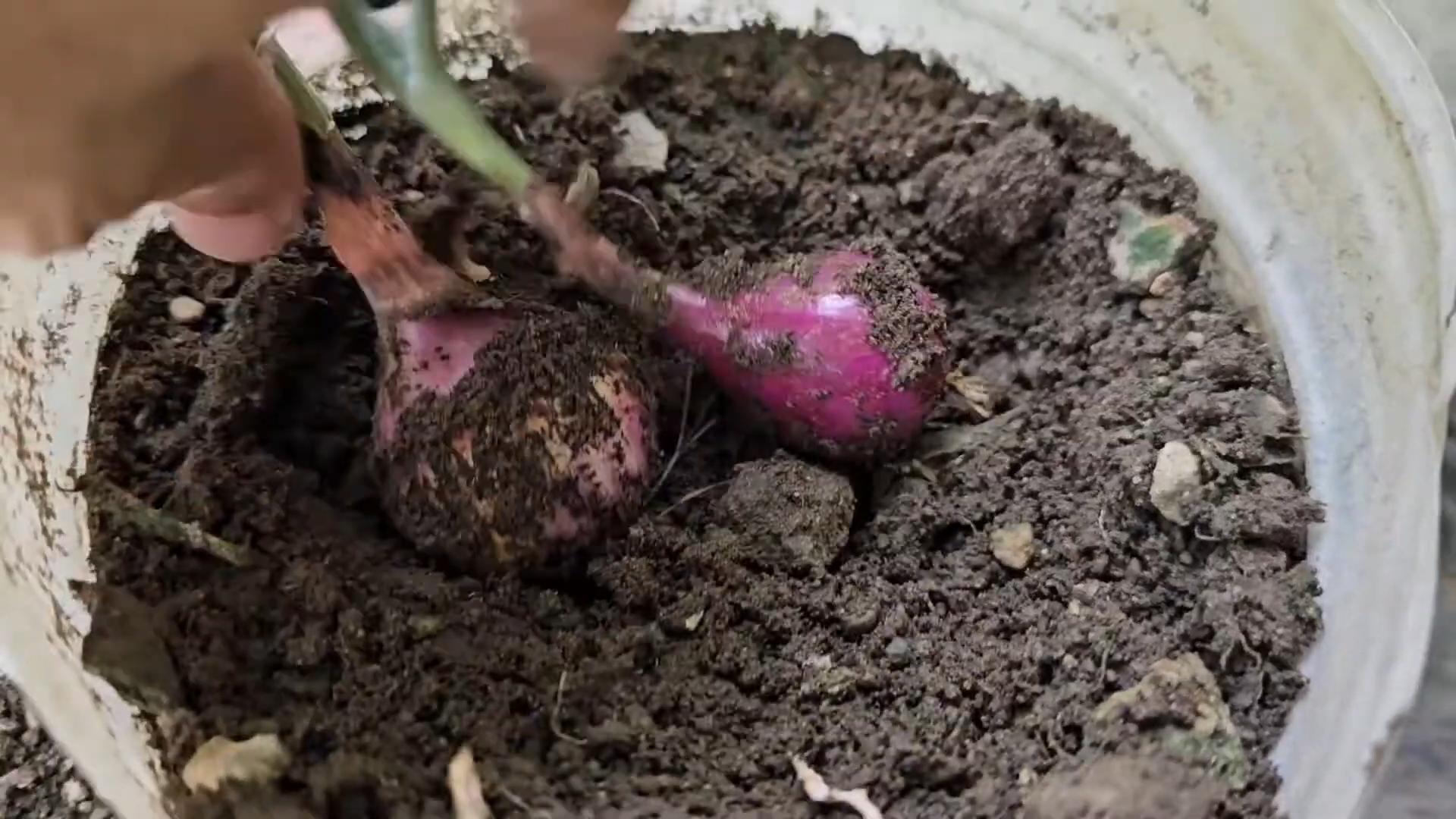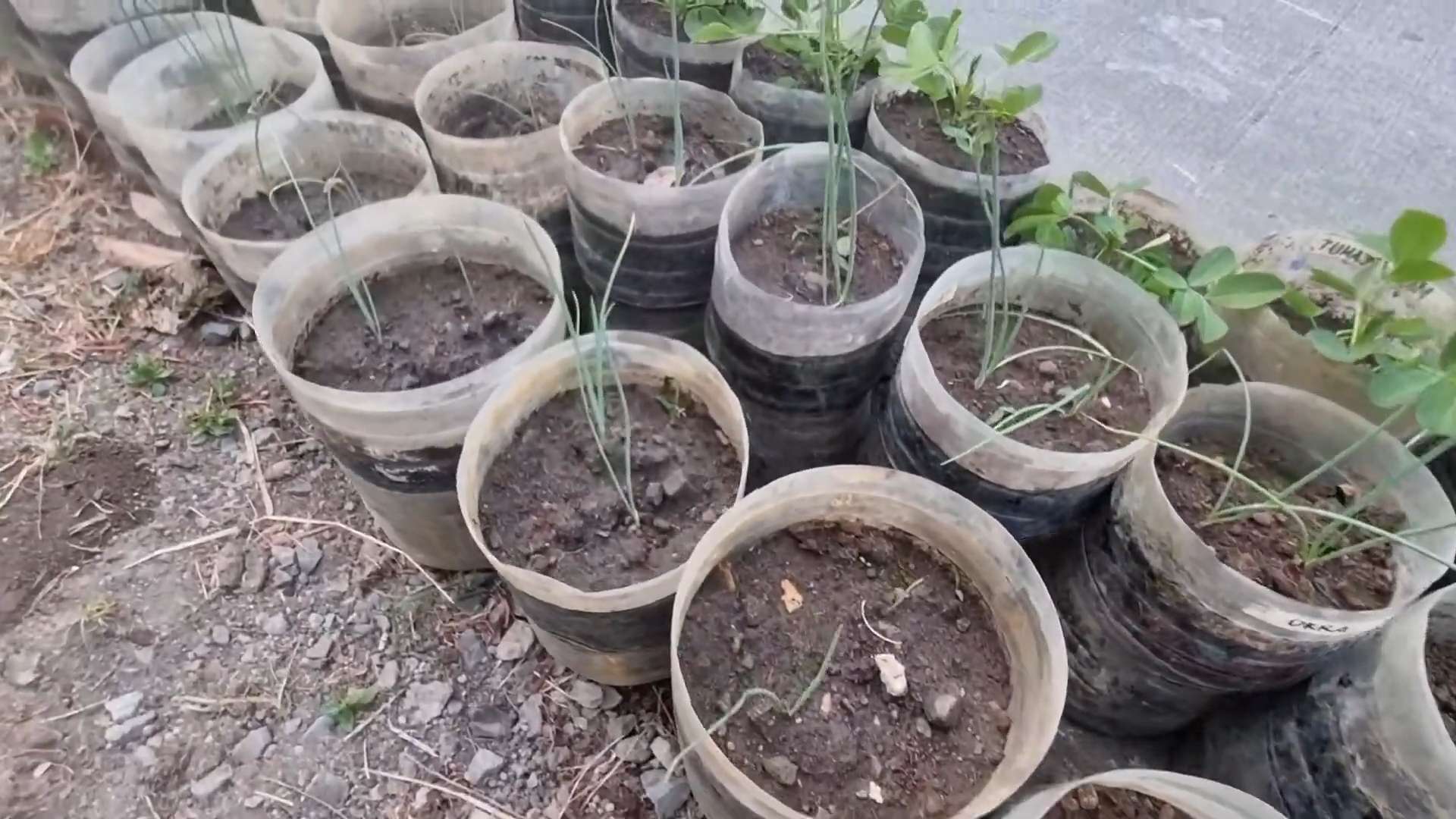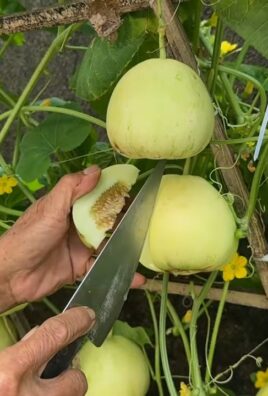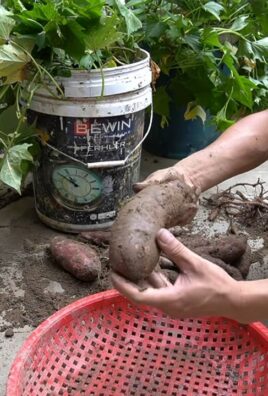Grow Onions at Home – imagine stepping into your garden and plucking fresh, vibrant onions straight from the earth! It’s not just a dream; it’s an achievable reality with a few simple tricks and a dash of DIY spirit. For centuries, onions have been a staple in cuisines worldwide, dating back to ancient civilizations where they were not only prized for their flavor but also for their medicinal properties. From the Egyptians who revered them to the Romans who carried them on their military campaigns, onions have a rich and fascinating history.
But why should you bother to grow onions at home? Well, store-bought onions can sometimes lack that intense, fresh flavor that truly elevates a dish. Plus, growing your own allows you to control exactly what goes into your food, avoiding harmful pesticides and ensuring the highest quality produce. In this article, I’m going to share some easy-to-follow DIY tricks and hacks that will transform your garden into an onion-growing haven, even if you’re a complete beginner. Get ready to enjoy the satisfaction of harvesting your own delicious, homegrown onions!

Grow Your Own Onions: A Beginner’s Guide
Hey there, fellow gardening enthusiasts! I’m so excited to share my experience with growing onions at home. It’s surprisingly easy, incredibly rewarding, and nothing beats the taste of a freshly harvested onion from your own backyard. Forget those bland supermarket onions – let’s get growing!
Choosing Your Onion Type
Before we dive into the nitty-gritty, let’s talk about onion types. This is crucial because different onions thrive in different climates. You’ll want to choose a variety that suits your region’s day length.
* Long-Day Onions: These need 14-16 hours of daylight to bulb properly. They’re best suited for northern regions. Popular varieties include Walla Walla Sweet, Yellow Spanish, and Red Burgundy.
* Short-Day Onions: These need 10-12 hours of daylight. Perfect for southern climates. Examples include Texas Sweet White, Crystal White Wax, and Red Creole.
* Intermediate-Day Onions: As the name suggests, these are a bit more flexible and need 12-14 hours of daylight. They can be grown in a wider range of climates. Consider varieties like Candy Onion or Superstar.
How to figure out which type is best for you? Check with your local garden center or agricultural extension office. They’ll have the best recommendations for your specific area.
Starting from Seeds vs. Sets vs. Transplants
You have three main options for starting your onion journey: seeds, sets, or transplants. Each has its pros and cons.
* Seeds: This is the most economical option, but it requires the most time and effort. You’ll need to start your seeds indoors 8-10 weeks before the last expected frost.
* Sets: These are small, immature onion bulbs. They’re easier to handle than seeds and will give you a head start. However, they can sometimes be more prone to bolting (going to seed prematurely).
* Transplants: These are young onion plants that have already been started for you. They’re the most convenient option, but also the most expensive.
I personally prefer starting from seeds because I enjoy the process and the control it gives me. But if you’re short on time or new to gardening, sets or transplants are excellent choices.
Materials You’ll Need
Okay, let’s gather our supplies! Here’s what you’ll need to grow onions successfully:
* Onion seeds, sets, or transplants: Choose the variety that suits your climate and your preferred starting method.
* Seed starting trays (if starting from seeds): These will help you get your seeds off to a good start indoors.
* Potting mix (if starting from seeds): Use a high-quality potting mix that drains well.
* Garden soil: Onions need well-drained, fertile soil.
* Compost or well-rotted manure: This will enrich the soil and provide essential nutrients.
* Fertilizer: A balanced fertilizer (like 10-10-10) will help your onions grow strong.
* Watering can or hose: For regular watering.
* Gardening gloves: To protect your hands.
* Trowel or spade: For planting.
* Mulch: To help retain moisture and suppress weeds. Straw, hay, or wood chips work well.
Starting Onions from Seeds (Indoor Method)
If you’re going the seed route, here’s how to get started indoors:
1. Sow the seeds: Fill your seed starting trays with potting mix. Moisten the soil and then sow the onion seeds about ¼ inch deep. I usually sow a few seeds per cell to increase my chances of germination.
2. Provide warmth and light: Cover the trays with a clear plastic lid or plastic wrap to create a humid environment. Place them in a warm location (around 70-75°F). Once the seeds germinate (usually within 7-14 days), remove the cover and provide plenty of light. A grow light is ideal, but a sunny windowsill can also work.
3. Water regularly: Keep the soil consistently moist, but not soggy. Water from the bottom to avoid damping off (a fungal disease that can kill seedlings).
4. Thin the seedlings: Once the seedlings have a few true leaves, thin them out so that only one strong seedling remains in each cell.
5. Harden off the seedlings: About a week before you plan to transplant them outdoors, start hardening them off. This means gradually exposing them to outdoor conditions. Start by placing them outside for an hour or two each day, gradually increasing the time over the course of a week.
Preparing the Garden Bed
Whether you’re using seeds, sets, or transplants, preparing the garden bed is essential for success.
1. Choose a sunny location: Onions need at least 6-8 hours of sunlight per day.
2. Prepare the soil: Loosen the soil to a depth of at least 12 inches. Remove any rocks, weeds, or debris.
3. Amend the soil: Mix in plenty of compost or well-rotted manure to improve drainage and fertility. Onions are heavy feeders, so this step is crucial.
4. Check the pH: Onions prefer a soil pH of 6.0-7.0. You can test your soil with a soil testing kit and amend it accordingly.
5. Create raised beds (optional): Raised beds can improve drainage and warm up the soil more quickly in the spring.
Planting Onions
Now for the fun part – planting!
1. Planting sets: Plant onion sets about 1 inch deep and 4-6 inches apart in rows that are 12-18 inches apart. Make sure the pointed end of the set is facing up.
2. Planting transplants: Dig a small hole for each transplant. Gently remove the transplant from its container and place it in the hole. The top of the root ball should be level with the soil surface. Space the transplants 4-6 inches apart in rows that are 12-18 inches apart.
3. Planting seedlings (from seeds): Follow the same procedure as planting transplants. Be extra gentle when handling the delicate seedlings.
4. Water thoroughly: After planting, water the onions thoroughly to help them settle in.
5. Mulch: Apply a layer of mulch around the onions to help retain moisture, suppress weeds, and regulate soil temperature.
Caring for Your Onions
Once your onions are planted, here’s how to keep them happy and healthy:
1. Water regularly: Onions need consistent moisture, especially during bulb formation. Water deeply whenever the top inch of soil feels dry.
2. Fertilize: Fertilize your onions every 2-3 weeks with a balanced fertilizer. Follow the instructions on the fertilizer package. I like to use a liquid fertilizer for easy application.
3. Weed regularly: Weeds can compete with onions for nutrients and water. Keep the garden bed free of weeds by hand-pulling or using a hoe.
4. Pest and disease control: Onions can be susceptible to certain pests and diseases, such as onion maggots, thrips, and downy mildew. Inspect your plants regularly and take action if you notice any problems. Organic pest control methods, such as insecticidal soap or neem oil, can be effective.
5. Avoid hilling: Unlike potatoes, onions don’t need to be hilled. In fact, hilling can actually hinder bulb development.
Harvesting Your Onions
The moment you’ve been waiting for! Here’s how to know when your onions are ready to harvest:
1. Check for tops falling over: This is the most reliable sign that your onions are ready to harvest. When the tops start to turn yellow and fall over, it’s time to get your gloves on.
2. Gently lift the bulbs: Use a garden fork or trowel to gently lift the bulbs from the soil.
3. Cure the onions: Curing is essential for long-term storage. Spread the onions out in a single layer in a warm, dry, well-ventilated place for 2-3 weeks. The outer skins will dry and become papery.
4. Store the onions: Once the onions are cured, you can store them in a cool, dry, dark place. Braiding the tops together and hanging them is a traditional method, but you can also store them in mesh bags or crates.
Troubleshooting
Even with the best care, you might encounter some challenges along the way. Here are a few common problems and how to address them:
* Bolting (premature flowering): This can be caused by temperature fluctuations or stress. If your onions bolt, they won’t form large bulbs.

Conclusion
So, there you have it! Growing onions at home, whether you’re a seasoned gardener or a complete beginner, is not only achievable but also incredibly rewarding. Forget those bland, mass-produced onions from the supermarket. Imagine the satisfaction of harvesting plump, flavorful onions that you nurtured from tiny sets or even scraps! This DIY trick for growing onions at home is a game-changer because it puts you in control of the entire process, from soil to table. You know exactly what went into your onions – no pesticides, no hidden chemicals, just pure, homegrown goodness.
But the benefits extend beyond just taste and control. Growing your own onions is also a fantastic way to reduce your carbon footprint. Think about all the transportation and packaging involved in getting onions from the farm to your local grocery store. By growing your own, you’re cutting out a significant portion of that environmental impact. Plus, it’s a budget-friendly way to add a staple ingredient to your cooking. Onions are used in countless dishes, and the savings can really add up over time.
Why is this a must-try? Because it’s simple, sustainable, and delivers superior flavor. You’ll be amazed at the difference between store-bought and homegrown onions. The taste is fresher, more vibrant, and the texture is crisper.
Now, let’s talk about variations. While this guide focuses on growing onions from sets, you can also experiment with growing them from seeds or even from scraps. Growing from seeds takes a bit longer, but it offers a wider variety of onion types to choose from. And growing from scraps – using the root end of an onion you’ve already used – is a fun and eco-friendly way to recycle and get a head start on your next crop. Consider trying different varieties of onions too! From sweet Vidalia onions to pungent red onions, there’s a flavor profile to suit every palate. You can also experiment with different planting times to extend your harvest season. Plant some early-season varieties for a spring harvest and some late-season varieties for a fall harvest.
Don’t be afraid to get your hands dirty and experiment! Gardening is all about learning and adapting. Observe your plants, pay attention to their needs, and adjust your approach as necessary. You might discover new techniques or variations that work even better in your specific climate and soil conditions.
We wholeheartedly encourage you to try this DIY trick for growing onions at home. It’s a rewarding experience that will connect you with nature, improve your cooking, and save you money. And most importantly, we want to hear about your experience! Share your photos, tips, and stories in the comments below. Let us know what varieties you’re growing, what challenges you’ve faced, and what successes you’ve achieved. Together, we can create a community of home gardeners who are passionate about growing their own food. So, grab your gardening gloves, get your hands dirty, and start growing those delicious, homegrown onions today! You won’t regret it.
Frequently Asked Questions (FAQ)
What is the best time of year to plant onion sets?
The ideal time to plant onion sets depends on your climate. In general, you should plant them in early spring, as soon as the ground can be worked. This is typically around 2-4 weeks before the last expected frost. For warmer climates, you can plant them in the fall for a winter or early spring harvest. The key is to give the onions enough time to mature before the weather gets too hot or too cold. Check your local gardening resources for specific planting dates in your area.
What kind of soil is best for growing onions?
Onions thrive in well-drained, fertile soil that is rich in organic matter. They prefer a slightly acidic to neutral pH, ideally between 6.0 and 7.0. Before planting, amend your soil with compost, well-rotted manure, or other organic materials to improve drainage and fertility. Avoid heavy clay soils, as they can become waterlogged and hinder onion growth. If you have clay soil, consider planting your onions in raised beds or containers.
How much sunlight do onions need?
Onions need at least 6-8 hours of direct sunlight per day to grow properly. Choose a planting location that receives plenty of sunlight throughout the day. If you’re growing onions in containers, make sure to place them in a sunny spot. Insufficient sunlight can result in small, underdeveloped bulbs.
How often should I water my onions?
Onions need consistent moisture, especially during bulb formation. Water them deeply whenever the top inch of soil feels dry to the touch. Avoid overwatering, as this can lead to root rot. During hot, dry weather, you may need to water your onions more frequently. A good rule of thumb is to provide about 1 inch of water per week, either through rainfall or irrigation.
What kind of fertilizer should I use for onions?
Onions are heavy feeders and benefit from regular fertilization. Use a balanced fertilizer with a higher phosphorus content to promote bulb development. You can also use a fertilizer specifically formulated for onions or vegetables. Apply fertilizer according to the package instructions, typically every 2-3 weeks during the growing season. Avoid over-fertilizing, as this can lead to excessive foliage growth at the expense of bulb development.
How do I prevent pests and diseases from affecting my onions?
Several pests and diseases can affect onions, including onion maggots, thrips, and fungal diseases. To prevent these problems, practice good garden hygiene. Remove any weeds or debris around your onion plants, and avoid overcrowding. Rotate your crops each year to prevent soilborne diseases from building up. You can also use organic pest control methods, such as insecticidal soap or neem oil, to control pests. For fungal diseases, ensure good air circulation around your plants and avoid overhead watering.
When are onions ready to harvest?
Onions are typically ready to harvest when the tops begin to fall over and turn yellow or brown. This usually happens about 100-120 days after planting. Once the tops have fallen over, stop watering the onions and allow them to dry out for a few days. Then, carefully dig up the bulbs and cure them in a warm, dry place for 2-3 weeks. Curing helps to toughen the outer skin and prevent rot during storage.
How do I store onions properly?
Store cured onions in a cool, dry, and well-ventilated place. A temperature between 32°F and 40°F is ideal. You can store onions in mesh bags or crates, making sure they are not touching each other. Avoid storing onions near potatoes, as they can cause each other to spoil more quickly. Properly stored onions can last for several months.
Can I grow onions in containers?
Yes, you can definitely grow onions in containers! Choose a container that is at least 8-10 inches deep and wide to allow enough room for the bulbs to develop. Use a well-draining potting mix and provide plenty of sunlight and water. Container-grown onions may need more frequent watering and fertilization than those grown in the ground.
What are some good companion plants for onions?
Onions are known to repel certain pests, making them a good companion plant for many other vegetables. Some good companion plants for onions include carrots, tomatoes, lettuce, and cabbage. Avoid planting onions near beans or peas, as they can inhibit each other’s growth.
Can I grow onions from scraps?
Yes, you can regrow onions from scraps! Save the root end of an onion after you’ve used the top portion. Place the root end in a shallow dish of water, making sure the bottom is submerged. Place the dish in a sunny location and change the water every day or two. After a few days, you should see new roots and green shoots emerging. Once the roots are well-developed, you can transplant the onion scrap into a pot or garden bed. This is a fun and easy way to recycle and get a head start on your next onion crop.





Leave a Comment